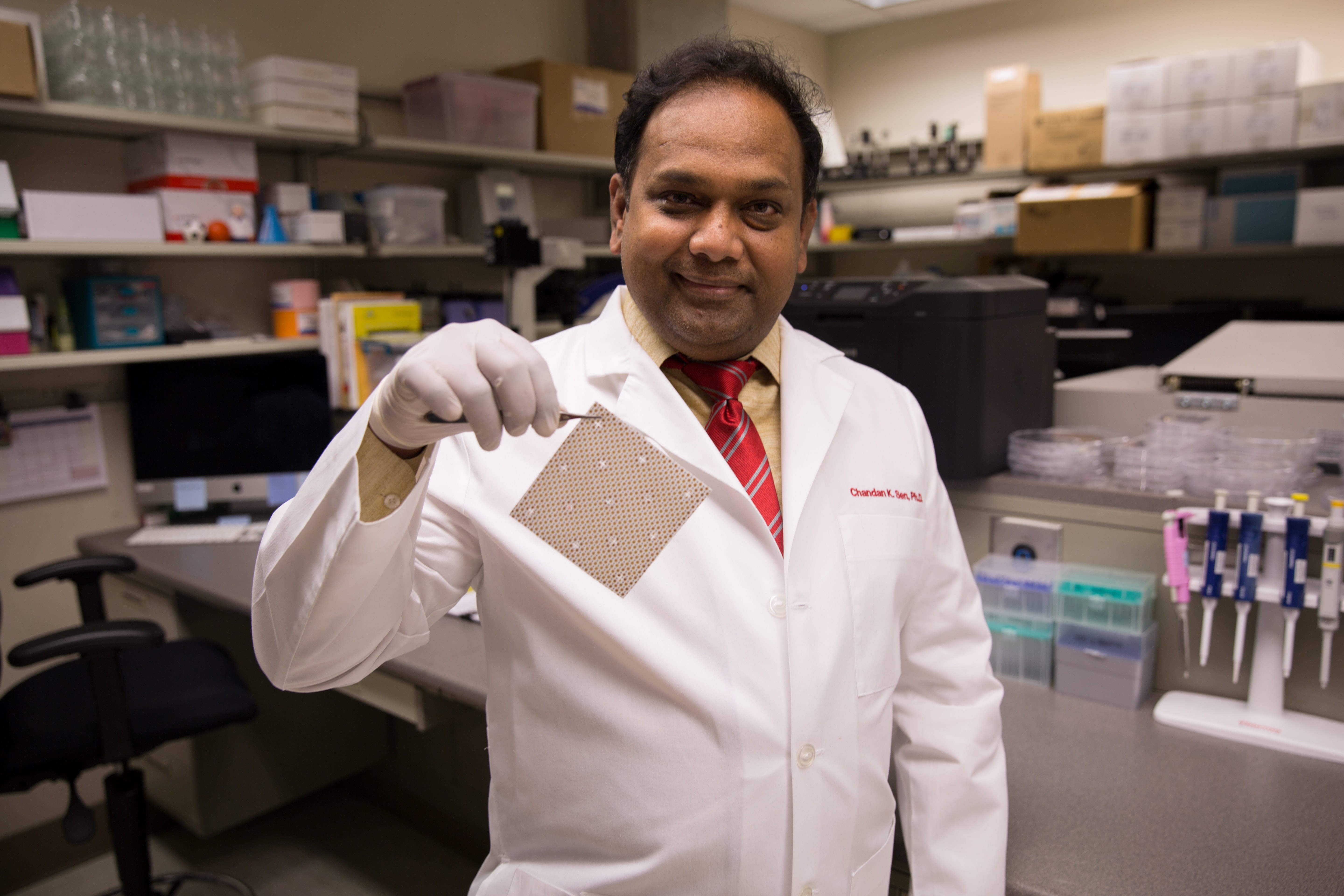Researchers from the Ohio State University Wexner Medical Center have developed special electrically charged bandages that can prevent infections, combat antibiotic resistance and enable healing in burn wounds. This type of dressing turns electrically active when it comes in contact with bodily fluids.
According to Dr. Chandan Sen, director of Ohio State’s Center for Regenerative Medicine and Cell Based Therapies, who led the study with colleagues at the Medical Center’s Comprehensive Wound Center and Center for Microbial Interface Technology, “Drug resistance in bacteria is a major threat, and antibiotic-resistant biofilm infections are estimated to account for at least 75 percent of bacterial infections in the United States. This is the first pre-clinical long-term porcine study to recognize the potential of ‘electroceuticals’ as an effective platform technology to combat wound biofilm infection.”

Source: Ohio State University
The study was based on Dr. Sen’s 2014 research with a wireless electroceutical dressing (WED), wherein he made use of silver and zinc that was printed of fabric. When the fabric is moistened, WED generates a weak electrical field without any external power supply and can be used just like other disposable dressings.
“The fact that wireless electric dressing is FDA-cleared and already in clinical use heightens the need to understand underlying mechanisms to enable optimal use,” Dr. Sen said. “Since it relies on electrical principles, it’s not subject to the mechanisms that may promote drug resistance. Understanding how this novel dressing may influence microbial, host and host-microbe interactions will determine the optimal use of this simple technology platform.”
During the research, the WED dressing was applied within 2 hours of wound infections in pigs to test its ability to prevent biofilm formation. WED was also applied after 7 days of infection to monitor the disruption of established biofilm. Wounds were treated with placebo dressing or WED twice a week for 56 days. According to Dr. Sen, Both proved successful.
“Our study shows that WED may be viewed as a first generation electroceutical wound care dressing, and it also accelerated functional wound closure by restoring skin barrier function,” Dr. Sen said. “Both from bacterial biofilm structure as well as host response perspectives, WED was consistently effective. No batteries or wires are needed because we harness the power of electrochemistry”
Hopefully this study will make its way to the markets soon and will be able to help humankind.
Source:








)




